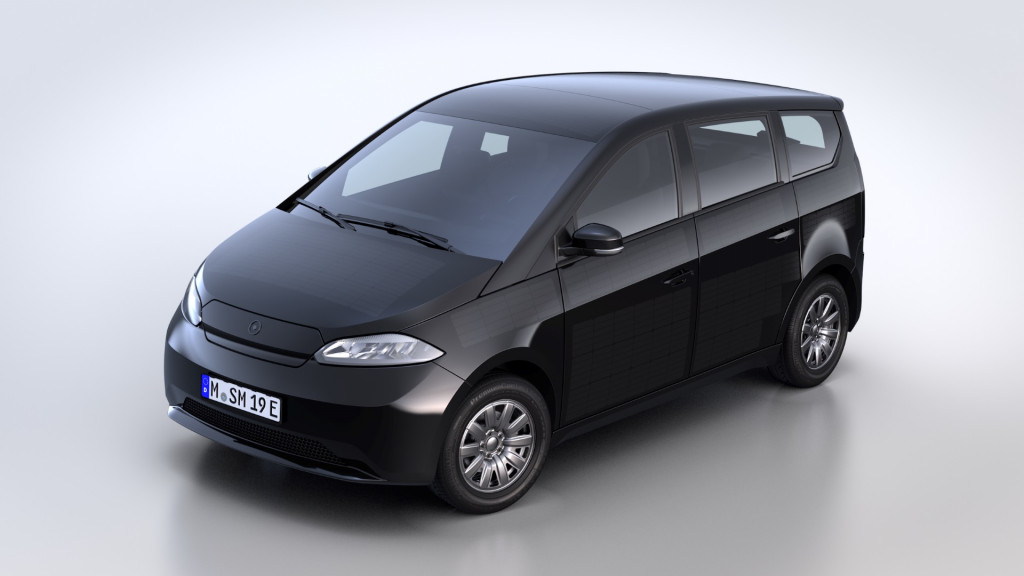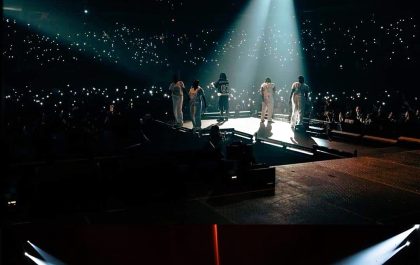–Bengt Halvorson | Greencar Reports
 In a sea of electric-car startups, Sono Motors has no problem standing out.
In a sea of electric-car startups, Sono Motors has no problem standing out.
The Munich-based company aims to build an unpainted plastic-paneled, solar-cell-covered urban hatchback primarily for Europe. It’s been largely crowdfunded—most recently, with a successful $58 million round. And the car will be made with China’s NEVS at the Trolhättan, Sweden, plant that produced generations of Saabs.
Although Sono is working with Finland’s Valoe Oyj for solar components, Germany’s ElringKlinger for the battery systems, and Continental for drive components, it’s doing a lot of the development work on its own. That includes some “first ever” work to be done in managing the power trickling in at different rates from the Sion’s solar modules.
Up until now, solar cars have packaged their cells largely on the same plane—the roof. Solar cells only produce their peak power when the sun is directly overhead, and hitting the panel at a 90-degree angle. Having solar cells on all the panels—248 of them in the Sion—can mix that up in a helpful way, creating angles in which at least one of the panels is somewhere close to peak even if other panels aren’t.
That patchwork creates new issues. Connecting the solar cells isn’t as easy as it sounds—especially when, as Sono intends, you integrate those cells at several points in the body.

“Not every cell generates the same amount of power, because our energy supplier, the sun, moves constantly,” the company’s photovoltaic power electronics expert explained in a company blog post from earlier this month. “Furthermore, not all solar cells on the Sion point in the same direction.”
To that, it’s devised a Maximum Power Point Tracking central unit to adjust the load on solar modules individually, so the cells in that module can perform to the optimum level. With the new unit, the Sion converts to the voltage of the high-voltage battery, between 300 and 400 volts, in a single process that aims to reduce losses.
So far Sono is claiming a 94-percent efficiency from this converter. Whenever the coronavirus pandemic allows, Sono aims to expand testing in Munich, using simulators to fine-tune the system to potential light and temperature conditions.
Sono Sion solar assisted electric car
Sono hasn’t backed away from its optimistic numbers in what it claims to be able to generate from the sun: up to 3,600 miles per year from the sun, or a daily average of just under 10 miles year-round.
You might see dramatically more or less depending on what time of the year and the level of cloud cover, of course. In Munich, Germany, for instance, it estimates up to 21 miles per day. Sono plans to offer predictive tools that are based on meteorological data and the car’s location to help plan maximizing solar-power benefits.
In the Sion, the solar cells are embedded in clear polymer rather than in glass, which the company says makes them 20% lighter than comparable metal panels—as well as capable of producing more power per area (up to 220 watts per square meter) than existing flexible or glass photovoltaics.
Sono plans to use NMC 622 prismatic cells, with 12 per module and a total of 16 modules in 35-kwh water-cooled pack. That will provide a total range—when you either plug in or wait long enough—in the vicinity of 160 miles. Sono has in the past floated the possibility of leasing or buying the pack separately from the rest of the vehicle, to help keep the price down.
Sono now anticipates launching its development prototypes in late September of this year—slightly later than previously anticipated. And the company confirmed last week to Green Car Reports that it plans to produce its first vehicles on the line at the end of 2021, with an official start of production and first deliveries to start in early 2022.
Related posts
Global | Didi Angaye Earns A Distinction Award, Another Feather To The Cap
On a bright sunny day, in the month of July, 2024, the prestigious Staffordshire University located in the West Midlands of England organised its Award giving and Graduation ceremony to honour graduates of various educational programmes and courses which it offers. Didi Timipah Angaye,…
Olu Of Warri Bags Award In UK, Wife Advocates Return To Cultural Values
The Olu of Warri, Ogiame Atuwatse III, has received the Leadership and Community Development award at the 14th African Achievers Awards (AAA), which took place at the Parliament House, United Kingdom. The award was presented by a member of the House of Lords, London, Rt…
Brit Awards | Asake, Burna Boy And Other ‘New Cats’ Get Nominations
Nigerian singers Burna Boy, Asake, and Rema have been nominated for the 2024 Brit Awards. The nomination list for the annual music awards show was released on Wednesday 25, January 2024. Burna Boy and Asake made the ‘Best International Artiste’ category, while ‘Calm…
Brit Awards 2024 | The Full List Of Artist(e)s
This year’s Brits nominees have been revealed ahead of the ceremony in London in March. Dua Lipa is the first star confirmed to perform at the event – but how many awards is she up for? Musicians including Raye, Central Cee, J Hus and Blur are also…
Despite Increased Transfer Volume And Institutional Adoption, Bitcoin Stays Below $60K
Bitcoin’s price hovers around $59K as increased transfer volume indicates a stable demand among investors. CryptoQuant data indicates buyers are absorbing the panic selling pressure around the $57K price level. Bitwise’s latest report suggests that institutional investors are still buying Bitcoin despite the recent price…
Traders Focus On Meme Coins As Bitcoin, Ethereum And XRP Erase Recent Gains
Bitcoin, Ethereum and XRP dip under key support levels at $60,000, $2,600 and $0.60 respectively. Tron ecosystem’s meme launchpad SunPump generates over $1.1 million in revenue within twelve days of its launch. Tron network daily revenue reached a record high of $26.83 million on Tuesday,…
Top 10 Cryptocurrencies To Invest in January 2024
-Michael Adams From Bitcoin and Ethereum to Dogecoin and Tether, there are thousands of different cryptocurrencies, making it overwhelming when you’re first getting started in the world of crypto. To help you get your bearings, these are the top 10 cryptocurrencies based on their market…
The Risk And Reward Of ChatGPT In Cybersecurity
Juan is an experienced CTO with a demonstrated history of working in the computer and network security industry. He is an information technology professional skilled in SAP and Oracle applications, computer forensics, vulnerabilities research, IPS/IDS and information security. Unless you’ve been on a retreat in…











